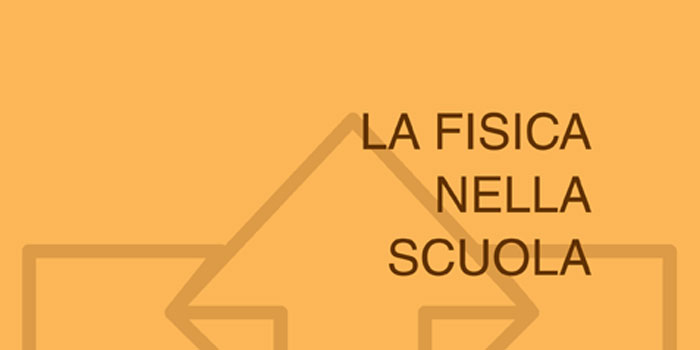Articoli rivista
Note di laboratorio
 Anno XXIII - n.1 - gennaio/marzo 1990
Anno XXIII - n.1 - gennaio/marzo 1990 Un’idea per un trasduttore di temperatura
This article shows how students can be taught the concept of using a transducer to measure the temperature with a very simple electronic circuit in which a NTC thermistor acts as sensor. Only a basic knowledge of the main properties of transistors and thermistors is required. […]
 Anno XLVII - n.1 - gennaio/marzo 2014
Anno XLVII - n.1 - gennaio/marzo 2014 Un metodo per misurare la velocità del suono 2
A simple experiment for measuring the velocity of sound in air using two hollow metal cylinders, a microphone and a digital oscilloscope is described. Knowing the distance between microphone and cylinders the velocity of sound is easily computed by measuring the time interval between banging them together and the microphone’s reception of the sound. […]
 Anno XXXII - n.2 - aprile/giugno 1999
Anno XXXII - n.2 - aprile/giugno 1999 Un microfono on-line per “vedere” la riflessione del suono in un tubo per “sentire” l’accelerazione di gravità
On-line data acquisition systems have disclosed new possibilities for teaching physics laboratory. A cheap and easy apparatus, as the one here described, allows to easily perform interesting experiments or to re-design old experiments making them suitable for schools that have no laboratory, […]
 Anno XXV - n.2 - aprile/giugno 1992
Anno XXV - n.2 - aprile/giugno 1992 Un particolare pendolo fisico per ricavare la relazione fra il periodo e la gravità
A pendulum whose piane of oscillation can be inclined at will between vertical and horizontal was designed, built and used to measure the effect of varying g on its period of oscillation. […]
 Anno XLIII - n.4 - ottobre/dicembre 2010
Anno XLIII - n.4 - ottobre/dicembre 2010 Un pendolo smorzato, con piano di oscillazione variabile, studiato con RTL
A computer-aided data acquisition and analysis tool is proposed for studying the behaviour of a pendulum coupled to a low-friction rotary sensor. […]
 Anno XLVIII - n.2 - aprile/giugno 2015
Anno XLVIII - n.2 - aprile/giugno 2015 Un possibile metodo di misura della coppia sviluppata da un motore elettrico
An electronic way to measure the mechanical torque developed by an electric motor is noted. The measurement is made solely on the stator. […]
 Anno XLVI - n.4 - ottobre/dicembre 2013
Anno XLVI - n.4 - ottobre/dicembre 2013 Un semplice dispositivo con cui esplorare le onde radio generate da un telefonino
A simple low cost homemade device that converts radio wave energy from a mobile phone signal to electricity for lighting an LED is described. No battery or complex circuitry is required. The device allows a range of interesting experiments on the physics and technology of mobile phones. […]
 Anno XXV - n.4 - ottobre/dicembre 1992
Anno XXV - n.4 - ottobre/dicembre 1992 Un semplice esperimento di carattere frattale
By making paper balls with crumpled sheets of paper and studying the functional relationship between their mean diameters versus their mass it is possible to introduce the concept of fractional dimensions to students. […]